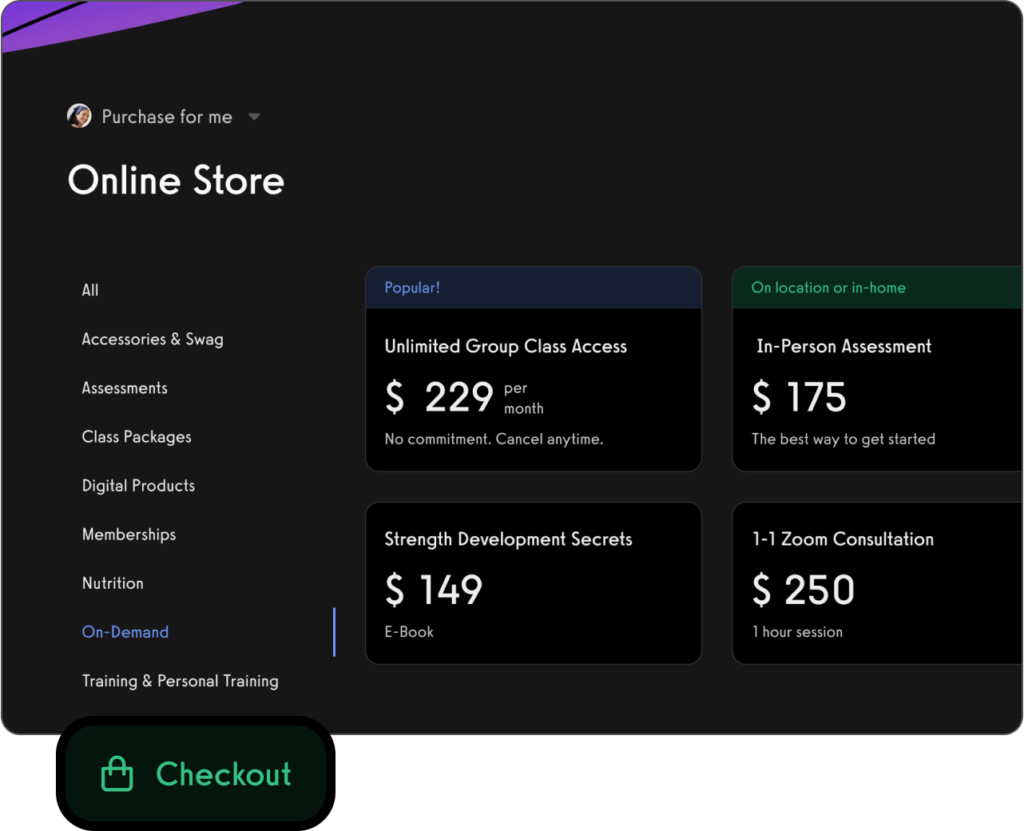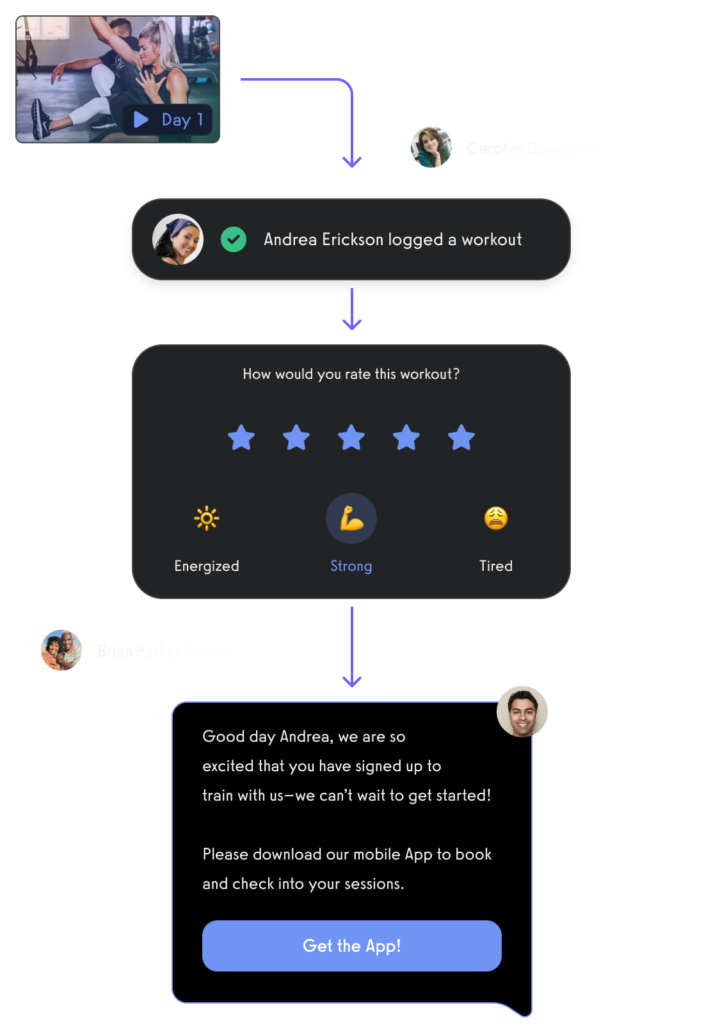How profitable is owning a gym? (Average Gym Profit Margins by Gym Type)
Owning a gym can be profitable—the average gym profit margin is 10-15%—but profitability varies significantly based on several factors; gyms generate average annual incomes ranging from $300,000 to $500,000, while gym owners typically earn between $30,000 and $76,000, with a median income of approximately $49,000.

So how much do gyms make? The average gym profit margin is 10-15%, with franchise gym profits on the lower end of 10%, boutique fitness studios averaging 20% to even 40% profit margins, and CrossFit gym profit margins in the 25-30% range.

It’s important to note that gym profit margins vary depending upon the type of gym, location, and other factors. So, is owning a gym profitable? Are gyms profitable businesses? Just how profitable are gyms exactly? Do gyms make money? Yes!
While owning a gym can be profitable, it requires careful planning, strategic management, and a solid understanding of the fitness industry. Asking yourself the question, how much does it cost to start a gym is important because a big part of learning how to open a gym is understanding the costs that go into how to start a gym business. Having a successful gym often depends on the owner’s ability to adapt to market trends and build a strong fitness community of loyal members.

Read on to learn more about average gym profitability for various types of gyms, get a list of factors that influence gym profitability like learning how to reduce gym overhead costs, read our gym owner guide, check out the boutique fitness statistics report, and then check out the best gym management software. Learn how to increase gym revenue and profit and how to run a successful gym with the best gym payment processing software, best marketing software for gyms, and best unified platform for managing your entire gym.
Maximize your gym’s average order value with a best-in-class payments stack from the best gym POS software.

Sell fitness products and services in-person and online with the best gym ecommerce software.

Book appointments to keep your gym calendar full of profitable clients with the best gym booking software.

Engage your gym leads and gym members with email, SMS, and in-app notifications to get more sales.

All from your own custom branded fitness app.

See why the best gym management software, the best personal training software, and the best online fitness coaching software is all a single platform for growing your gym’s profitability: Exercise.com.

Average Gym Profit Margins by Type of Gym
Here are the average gym profit margins for different types of gyms:
| Type of Gym | Average Profit Margin | Source |
|---|---|---|
| Boutique fitness studios | 20-40% | SoulCycle S-1 |
| Traditional gyms | 10-15% | International Health, Racquet & Sportsclub Association (IHRSA) |
| Franchise gyms | 10% | FranchiseHelp |
| CrossFit boxes | 10-20% | Iron Bull Strength |
| Yoga studios | 20-30% | Yoga Alliance |
| Pilates studios | 20-30% | Club Industry |
| Swimming pool and aquatic centers | 10-15% | Pool & Hot Tub Alliance |
Are fitness centers profitable? Are franchise gyms profitable? Are CrossFit gyms profitable? They all can be! From the table you can see that the average boutique fitness studio profit margin is 20-40%, the average traditional gym profit margin is 10-15%, the average franchise gym profit margin is 10% (quite a bit lower than other gyms, but with a more established playbook and higher certainty of financial success), the average CrossFit gym profit margin is 27%, the average yoga studio profit margin is 20-30%, the average Pilates studio profit margin is 20-30%, and the average swimming pool/aquatic center profit margin is 10-15%.

If you are considering starting a gym then learn all about how to open a gym, how much it costs to open a gym, how to create a gym business plan, how to create a gym budget, how to get a gym loan, and all of the various fitness business ideas you can ideate on when deciding how to start a fitness business and decide which fitness business is right for you. There are lots of ways to make money from fitness and opening a gym is just one of them (For example, you can create a fitness app, you can sell fitness online, you can start a fitness bootcamp business, etc.)
And, of course, you can do all these things on the Exercise.com platform, whether you want to start and grow your gym or fitness business in-person or online.
Factors that Influence Gym Profitability
- Type of Gym: Whether it’s a franchise, boutique studio, or a CrossFit box, the type of gym significantly impacts profit margins. Franchises might see around 10%, whereas boutique studios can have margins between 20-40%.
- Location: A gym’s location is crucial. Prime locations with high foot traffic or in affluent neighborhoods may command higher membership fees.
- Membership Fees: The pricing strategy for gym memberships directly affects profitability. Competitive yet profitable pricing is key.
- Operational Costs: Keeping costs like rent, utilities, and staff salaries under control can significantly influence profits.
- Gym Size and Scale: Larger gyms with more members usually generate more revenue but also incur higher costs.
- Membership Base: The number and loyalty of members are critical. A steady, growing membership ensures consistent revenue.
- Additional Services: Offering personal training, group classes, or wellness services can increase revenue streams.
- Management Efficiency: Good management practices, including staff management and resource allocation, are vital for profitability.
- Marketing and Advertising: Effective marketing strategies can attract new members and retain existing ones, boosting profitability.
- Quality of Equipment and Facilities: Modern, well-maintained equipment and facilities can attract and retain members.
- Niche Market Focus: Targeting specific market segments, like youth fitness programs or senior wellness classes, can tap into unique revenue streams.
- Technological Integration: Utilizing technology for operations, marketing, and member engagement can enhance efficiency and member experience.
- Retail and Merchandise Sales: Selling gym merchandise or fitness products can provide additional income.
- Ancillary Revenue Opportunities: Revenue from sources like vending machines, snack bars, or rental spaces can add to the gym’s profitability.
- Cost Management: Controlling monthly costs of running a gym, including utilities and maintenance, is crucial.
- Economies of Scale for Franchises: Franchises benefit from brand recognition and bulk purchasing discounts but must also pay franchise fees.
- Legal Requirements: Complying with legal requirements can prevent costly fines and closures.
- Community Engagement: Building a community within the gym can improve member retention.
- Seasonal Trends: Adapting to seasonal fluctuations in membership can help stabilize revenue.
- Diversification: Offering a range of services, from traditional gym facilities to fitness classes and online coaching, can attract a broader clientele.
- Owner’s Involvement: An owner’s active involvement can drive the gym’s vision and ensure quality control.
- Customer Service Quality: Exceptional customer service can enhance member retention and referrals.
- Market Trends Adaptation: Keeping up with fitness and wellness trends keeps the gym relevant and appealing.
- Fitness Niche Exploitation: Specializing in a niche, like yoga or high-intensity interval training (HIIT), can attract dedicated clientele.
- Reinvestment in the Business: Continual reinvestment in the gym, be it in equipment or services, can drive long-term profitability.
- Member Feedback and Adaptation: Regularly soliciting and acting on member feedback can improve satisfaction and retention.
- Business Model Innovation: Exploring innovative business models, like hybrid online and in-person offerings, can tap into new markets.
- Strategic Partnerships: Collaborations with health brands, local businesses, or corporate wellness programs can open new revenue avenues.
- Fitness Challenges and Events: Hosting challenges or events can boost member engagement and attract new clients.
- Online Presence: A strong online presence, including social media and a robust website, can enhance marketing efforts.
This comprehensive list includes various factors that influence the profitability of a gym business. Of course, it is important to note that gym revenue and gym profitability can vary widely from one gym to another. Key factors for gym business profits include the gym owner/operator’s experience level, the type of gym business model, the market/location, the cost structure, pricing strategies and other factors.
Yes, it’s great to increase gym revenue, but as a gym owner (read our gym owner guide to learn more), what you really want to do is to increase your gym’s profits, because that is what’s left over after paying all your expenses, and what ultimately will end up as cash in your bank account. Sure, having average gym revenue is a milestone, but if you want to be one of the most successful gym owners, then you likely want to earn more profit as a gym owner than the typical average gym owner salary of $150,000 per year.
Read More:
- How to Increase Gym Revenue and Profitability
- The Most Successful Gyms in America
- What makes a gym successful?
- Most Profitable Fitness Business Models
What makes a profitable gym? Experienced gym owners implement a number of key strategies for increasing gym profits.
From upsells and online training memberships:

To smart time-saving fitness automations for member engagement and retention:

Gym owners use the Exercise.com platform to manage and grow their gym’s profitability every single day. Upsells and automations are just one of many profit-boosting features. From gym check-ins to workout logging and gym payment processing, gyms of all sizes (and profit margins!) can improve their gym profitability with one improvement at a time.

How to Increase Gym Profitability
There are a number of ways to increase gym profitability.
- Reduce expenses
- Increase prices
- Sell higher ticket packages
- Add upsells (Read: Fitness Upsells)
- Automate your marketing (Read: Fitness Automations)
Talk to us about how we can help your gym with software tools to power gym growth.

Do gym owners make a lot of money?
The income of gym owners varies widely based on the type of gym, location, and how they manage their business. While gym business profit margins generally range from 10-15%, with boutique fitness studios averaging higher at 20-40% and CrossFit gyms around 25-30%, the actual amount gym owners make can differ. Some gym owners may earn a significant income, especially if they run a successful boutique or specialized fitness studio, while others, particularly small gym owners, might earn a more modest amount.
Read More: Gym Owner Average Income
Is owning a gym a good business idea?
Owning a gym can be a good business idea if approached correctly. Success in the gym business requires understanding the market, choosing the right location, and offering services that meet the needs of your target audience. While the fitness industry is competitive, with the right business plan and management strategies, owning a gym can be profitable.
What is the profit margin of owning a gym?
The profit margin of owning a gym typically ranges from 10-15%. However, this can vary depending on the type of gym. Franchise gyms often see profit margins around the lower end of 10%, while boutique fitness studios and CrossFit gyms can achieve higher margins, sometimes ranging from 20% to as high as 40%.
How much does a little gym owner make?
The income of a small gym owner depends on various factors, including location, membership fees, and operational costs. While exact figures can vary, small gym owners may not make as much as larger gym franchises or high-end boutique studios, especially if they are just starting out or are in highly competitive areas.
Can you make a living owning a gym?
Yes, you can make a living owning a gym, particularly if you effectively manage the monthly cost of running a gym and optimize your services to attract and retain members. Successful gym owners often have a solid business plan, understand their market, and adapt to changing fitness trends.
Is it hard being a gym owner?
Being a gym owner can be challenging due to factors like competition in the fitness industry, the need to keep up with fitness trends, and the management of operational aspects such as staffing, marketing, and finance. However, with passion, strong business acumen, and effective strategies, it can also be a rewarding endeavor.
Read More:
What are the cons of owning a gym?
The cons of owning a gym include the potential for high startup costs, the challenge of maintaining consistent membership levels, managing operational expenses, and the need to continuously invest in marketing and new equipment to stay competitive.
Read More: Pros and Cons of Owning a Gym
Do small gyms make money?
Small gyms can make money, but their profitability often depends on their business model, location, niche market, and operational efficiency. While they may not generate as much revenue as larger gyms or franchises, they can be profitable with effective management and a strong customer base.
What type of gym is more profitable?
Boutique fitness studios and specialized gyms, like CrossFit boxes, are often more profitable due to their higher profit margins, which can range from 20-40%. These types of gyms offer specialized services that can command higher membership fees and foster a more loyal customer base.
Which gym franchises are the most profitable?
The profitability of gym franchises varies, but well-established brands with strong business models like Anytime Fitness, Planet Fitness, and LA Fitness are often among the most profitable. These franchises benefit from brand recognition, proven operational systems, and economies of scale.
What is the LA Fitness profit margin?
Specific profit margin data for LA Fitness is not publicly disclosed, but as a large gym franchise, its profit margins might be on the lower end of the average gym business profit margin, around 10%. Large franchises often have significant operational costs, which can impact their overall profitability.
What is the Planet Fitness profit margin?
Planet Fitness, known for its low-cost membership model, likely operates with profit margins similar to other large gym franchises, potentially around the 10% mark. Their business model focuses on volume and accessibility, which influences their profit structure.
What is the Anytime Fitness profit margin?
The profit margin for Anytime Fitness, as with other private companies, is not publicly available. However, as a well-established franchise with a strong brand presence, it’s likely that their profit margins are within the average range for gym franchises.
What is the toughest thing about being a gym owner?
The toughest thing about being a gym owner is balancing the various aspects of running a business, including financial management, marketing, maintaining high-quality services, and adapting to industry trends and customer needs. Additionally, managing competition and member retention can be challenging.
Read More: What scares a gym owner the most?
Why do gyms fail?
Gyms fail for various reasons, including poor location choice, inadequate market research, lack of a unique selling proposition, failure to keep up with industry trends, poor financial management, and not being able to effectively attract and retain members.
Read More: Reasons Gyms Fail
Is owning a gym passive income?
Owning a gym typically is not considered passive income as it requires active involvement and management. However, once established with a solid management team and operational systems, it can provide more passive income opportunities.
Read More: Is owning a gym passive income?
What types of fitness businesses make the most money?
Fitness businesses that often make the most money are those that offer specialized services, such as boutique fitness studios, high-end personal training services, and niche fitness programs like CrossFit or yoga studios. These businesses can command higher prices and often have a loyal customer base.
Read More: Most Profitable Fitness Business Models
How much money do I need to open a small gym?
The cost of opening a small gym can vary widely, but on average, it can range from $10,000 to $50,000, depending on factors like location, size, and the amount of equipment needed. This includes costs for leasing a space, purchasing equipment, initial marketing, and operational expenses.
Read More: How to Start a Small Gym
How do cheap gyms make money?
Cheap gyms make money primarily through volume, attracting a large number of members with low-cost memberships. They often rely on economies of scale, keeping operational costs low, and may also generate revenue through additional services like personal training or selling merchandise.
Read More: Planet Fitness Business Model
How do gym owners make money?
Gym owners make money through membership fees, personal training services, group classes, selling fitness merchandise, and sometimes through additional services like nutrition consulting or spa facilities. The key to profitability is maintaining a strong membership base and offering services that meet the members’ needs.
Read More: Ways Gyms Make Money
What gym makes the most money?
The gyms that make the most money are typically those with a strong brand presence, a large number of members, and diversified income streams. Large franchises like LA Fitness, Planet Fitness, and boutique studios with high membership fees and loyal clientele often fall into this category.
Read More:
How do I become a gym owner?
To become a gym owner, start by gaining experience in the fitness industry, conducting thorough market research, and developing a solid business plan. Consider factors like gym type, target market, location, and funding. You can start a gym from scratch, buy an existing gym, or purchase a franchise.
Read More: Gym Owner Guide
How many members does a gym need to be successful?
The number of members a gym needs to be successful depends on its business model, operational costs, and membership fees. Generally, a gym needs enough members to cover operational expenses and generate profit, which could range from a few hundred to several thousand members.
Read More: How many members does an average gym have?
How can gyms increase revenue and profitability?
Gyms can increase revenue and profitability by diversifying their service offerings, such as adding personal training, group classes, or online coaching. Implementing effective marketing strategies, improving member retention, and optimizing operational efficiency are also key.
Read More: How to Increase Gym Revenue and Profitability
How can Exercise.com help my gym business make more money?
Exercise.com can help your gym business make more money by providing comprehensive management software that streamlines operations, enhances member engagement, and supports marketing efforts. Their platform offers tools for scheduling, billing, workout creation, and performance tracking, allowing gym owners to focus on growth and profitability.
Is opening a gym profitable right away?
Opening a gym is not typically profitable right away. Like many businesses, it requires a significant initial investment. This can include costs for leasing or buying a space, renovating the space to fit the needs of a gym, purchasing equipment, hiring staff, and marketing to attract members. Once the gym is open, there are recurring costs like rent, utilities, employee salaries, and equipment maintenance. Depending on the location, competition, and effectiveness of marketing strategies, it may take months or even years for a gym to become profitable.
Read More:
- Most Profitable Fitness Business Models
- Is the fitness industry profitable?
- How to Increase Gym Revenue and Profit
Is a gym business profitable everywhere?
The profitability of a gym business varies based on several factors, and it’s not guaranteed to be profitable everywhere. Location is a critical factor; for instance, a gym in a densely populated urban area might see more foot traffic than one in a rural setting. However, the competition might be stiffer in urban settings. The target demographic, local economic conditions, cultural attitudes towards fitness, and the specific services offered by the gym also play significant roles. In some cultures or regions, niche fitness offerings like yoga studios or CrossFit boxes might be more popular than traditional gyms. Thorough market research, understanding the local demographics, and having a solid business plan are crucial before opening a gym in any location.
Read More: Best Locations for Gyms
How profitable are gyms with multiple locations?
Gyms with multiple locations often have the potential to be more profitable than single-location gyms, but this profitability is contingent on various factors.
- Economies of Scale: With multiple locations, gym owners can often negotiate better deals with suppliers, reduce per-unit costs, and streamline administrative processes, leading to reduced operational costs.
- Brand Recognition: Having multiple locations can enhance brand visibility and recognition, making marketing and advertising efforts more effective.
- Diversified Revenue Streams: Multiple locations mean diversified revenue streams. If one location underperforms due to local factors (like a competitor opening nearby or a temporary closure), the overall business can still remain stable if the other locations perform well.
- Shared Resources: Multi-location gyms can share resources, like trainers, equipment, or marketing campaigns, which can result in cost savings.
- Membership Flexibility: Offering members access to multiple locations can be an attractive selling point, potentially drawing in more clientele.
However, there are challenges as well:
- Increased Overhead: While some costs might go down per unit or location, absolute overhead costs will increase simply because there are more facilities to maintain.
- Management Complexity: Managing multiple locations requires more robust systems, better communication, and often a larger administrative team.
- Variable Performance: Not all locations will perform at the same level. Some may be more profitable than others due to differences in local demographics, competition, and other factors.
- Risk of Over-expansion: Growing too fast without a stable foundation can lead to operational inefficiencies and financial strain.
While gyms with multiple locations have the potential for greater profitability, the actual profitability hinges on efficient management, market research, strategic location selection, and the ability to leverage the advantages of having multiple outlets while mitigating the associated challenges.
Read More:
How much is the average fitness club revenue?
The average revenue for a fitness club can vary widely based on its size, location, membership fees, and the range of services it offers. In the U.S., for instance, smaller gyms might earn between $300,000 to $600,000 annually, while larger establishments in prime locations, especially those that offer premium services, can see revenues exceeding $2 million or more per year. However, revenue doesn’t equate to profit, as gyms have substantial operating costs. It’s essential to consider expenses such as rent, staff salaries, equipment maintenance, marketing, and other operational costs when evaluating the potential profitability of a gym.
What factors contribute to the profitability of a gym?
Profitability is influenced by factors such as membership fees, additional revenue streams, location, target audience, and competition. Efficient management, cost control, and effective marketing strategies can also play a significant role in determining the success of a gym.
Read More: How to Hire Gym Staff and Build an A+ Team
How much does it cost to open a gym?
The cost to open a gym can range from $130,700 to $205,000 for the first year. This includes leasing a space, purchasing high-quality gym equipment, renovation and construction, both online and offline marketing, as well as ongoing operational expenses like employee wages, utilities, maintenance, and insurance.
Read More: How much does it cost to open a gym?
How profitable is a gym in their first year?
The profitability of a gym in its first year can vary widely. While some gyms may start to see a profit towards the end of their first year, many do not become profitable until their second or third year. Initial expenses such as marketing, equipment purchases, and facility setup can impact early profitability.
Is a gym business profitable immediately?
A gym business is not typically profitable immediately. It often takes time to build a client base, optimize operational costs, and establish a strong market presence. Initial investments and ongoing expenses can delay profitability.
Is a gym profitable without personal training services?
A gym can be profitable without personal training services, but offering these services can significantly increase revenue potential. Personal training often commands high fees and can enhance member satisfaction and retention.
How to start a gym that is profitable immediately?
Starting a gym that is profitable immediately is challenging and may require innovative strategies like pre-selling memberships, minimizing initial costs, or finding unique revenue streams. Careful planning, market analysis, and efficient operations are crucial.
How do gyms make money?
Gyms make money through various channels, including membership fees, personal training services, group classes, merchandise sales, and additional amenities such as cafes and spa services.
Are small gyms profitable?
Small gyms can be profitable, especially if they cater to a niche market, maintain low overhead costs, and foster a strong community. Personalized service and specialized offerings can give small gyms a competitive edge.
Read More:
What is considered a good profit margin in a gym business?
A good profit margin in a gym business typically ranges from 10% to 30%, depending on various factors like location, services offered, and operational efficiency. High-value services and effective cost management can improve profit margins.
What is the average profit margin for gyms?
The average profit margin for gyms is around 15% to 20%, but this can vary widely based on the gym’s business model, market positioning, and cost structure.
What are the legal requirements for opening a gym?
The legal requirements for opening a gym include obtaining a business license, meeting zoning requirements, ensuring compliance with health and safety regulations, and securing liability insurance. Specific requirements can vary by location.
Read More: Gym Legal Requirements
Is starting a gym profitable typically for first-time gym owners?
Starting a gym can be profitable for first-time gym owners, but success often depends on thorough market research, a solid business plan, and effective management. Understanding the local market and offering unique services can enhance profitability.
How much does it cost to run a gym monthly?
The monthly cost to run a gym can vary widely, typically ranging from $20,000 to $50,000, covering expenses such as rent, utilities, staff salaries, and equipment maintenance.
Read More: How much does it cost to run a gym monthly?
Are private gyms profitable?
Private gyms can be profitable, especially when they offer specialized services, personalized training, and a high-quality member experience. Focusing on niche markets and maintaining low overhead costs can enhance profitability.
Is commercial gym equipment expensive?
Commercial gym equipment is generally expensive due to its durability, advanced technology, and the need to withstand heavy use. Investment in high-quality equipment can significantly impact the initial costs of opening a gym.
How long does it typically take for a gym to become profitable?
The time it takes for a gym to become profitable can vary widely, but on average, it can take anywhere from 1 to 3 years. Factors such as initial investment, ongoing expenses, and the success of marketing efforts can impact the time it takes to reach profitability.
What are the average profit margins for a gym, and how do they compare to other industries?
The average profit margin for a gym can range from 10% to 30%, depending on factors like size, location, and services offered. This is comparable to or even higher than some other industries, particularly when a gym effectively manages its expenses and optimizes revenue streams.
What strategies can I implement to maximize the profitability of my gym?
To maximize profitability, focus on attracting and retaining members, optimizing membership pricing, and offering additional revenue-generating services such as personal training, group classes, and retail sales. Implement cost-saving measures, maintain efficient operations, and regularly evaluate your marketing strategies to ensure their effectiveness.
Read More:
How can I increase gym membership sales?
A strong marketing strategy, effective gym prospect lead generation, offering competitive pricing and promotions, and providing a positive member experience can help increase gym membership sales. Leveraging the features of a comprehensive gym management software like Exercise.com, such as lead tracking and automated follow-ups, can also contribute to driving membership sales.
Read More:
- How to Get More Gym Members
- Best Gym Lead Management Software
- Best Gym Software with Automation Marketing
How can I optimize gym revenue streams?
Optimizing gym revenue streams involves diversifying offerings beyond memberships, such as personal training sessions, group classes, merchandise sales, and online training programs. Utilizing a gym management software like Exercise.com can help manage and track revenue from different streams, enabling effective financial management and strategic decision-making.
Read More:
How can I improve member retention rates?
Member retention is crucial for long-term gym profitability. Building strong relationships with members through personalized experiences, exceptional customer service, offering engaging and varied workout programs, and implementing effective member communication strategies can help improve retention rates. Gym management software, like Exercise.com, can aid in automating member communications, tracking member activity, and providing a personalized experience.
Read More:
- How to Increase Gym Membership Retention
- Gym Win-Back Campaign Ideas
- Best Gym Member Engagement Software
- Best Gym Email Software
- Best Gym SMS Texting Software
- Best Gym In-App Messaging Software
How can I manage gym expenses effectively?
Managing gym expenses effectively involves identifying areas of cost optimization, such as energy usage, inventory management, and staff scheduling. Utilizing a gym management software with robust reporting and analytics capabilities, like Exercise.com, can help track expenses, analyze financial data, and identify opportunities for cost savings and operational efficiency.
Read More: How to Reduce Gym Expenses
How can I leverage technology to enhance gym profitability?
Leveraging technology is essential for enhancing gym profitability. Implementing a comprehensive gym management software solution like Exercise.com can streamline business operations, automate administrative tasks, improve member engagement, and provide valuable insights through data analytics. By embracing technology and utilizing the right tools, gym owners can drive efficiency, increase revenue, and ultimately enhance profitability.
Read More:
How can I effectively track and manage the financial performance of my gym?
Utilize accounting software or hire a professional accountant to monitor your gym’s finances, including revenue, expenses, and cash flow. Regularly review your financial reports to evaluate profitability and make data-driven decisions to optimize your gym’s operations and marketing strategies. Choosing the best accounting software for gyms will also help you streamline financial operations.
Read More: How to Create a Gym Budget
What role does member retention play in the profitability of a gym?
Member retention is crucial for gym profitability, as it is generally more cost-effective to retain existing members than to acquire new ones. High member retention rates contribute to a stable revenue stream, allowing for better financial planning and more predictable cash flow.
How are gyms profitable?
Gyms can be profitable through a combination of factors. Solid marketing strategies help attract a steady stream of new members, while good location ensures accessibility and visibility. Providing exceptional customer service fosters loyalty and positive word-of-mouth referrals. Strong processes and efficient operations optimize resources and reduce costs. A robust gym management software solution, like Exercise.com, plays a critical role in streamlining operations, automating tasks, managing memberships, scheduling classes, and tracking progress. This comprehensive tooling allows gyms to focus on delivering an exceptional fitness experience while optimizing revenue streams and maximizing profitability.
Are there any additional revenue streams to consider for increasing gym profitability?
Consider offering ancillary services such as personal training, group fitness classes, workshops, or specialized programs. Expanding into retail sales of fitness apparel, supplements, or equipment can also provide additional revenue. Partnering with local businesses for cross-promotions or hosting events may create further opportunities to boost your gym’s profitability.
Read More: How to Create Multiple Gym Revenue Streams
If you want to join the many gym owners utilizing the best gym management software to open a gym and then run and grow their gym on the Exercise.com platform, get a demo to see how you can start improving your gym profit margins today.










